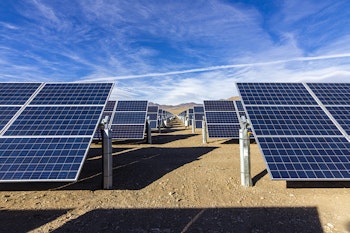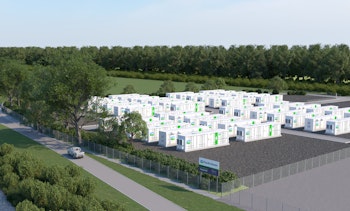Every summer sees Europeans heading south in search of sunshine. But a lack of sunny weather in countries from Poland to the Netherlands—and the UK, still part of the continent geographically if not politically - has not stopped Europe from embarking on a solar boom.
Last year, seven of the top 10 countries worldwide for solar capacity per capita were European, including unlikely nations such as Belgium, Denmark and Switzerland, according to figures from SolarPower Europe, an industry body.
Netherlands, which came second in the listing after Australia, installed 825 watts of solar energy for every person in the country. Germany, Europe’s leading solar market last year, was not far behind, with 714 watts installed per capita.
Germans added 6 GW of solar capacity in 2021, while Spain’s market grew by 4.8 GW and Poland, one of Europe’s rising stars for PV, installed 3.8 GW. These figures are great news in helping to bring low-cost renewable energy to millions of Europeans.

And they are only the beginning. Spurred by the tragic conflict in Ukraine, in May this year European lawmakers rushed through a package called REPowerEU that aims to turbo-charge the move to green power as a means for achieving greater energy independence.
The REPowerEU initiative has the potential to add at least 420 GW of solar installations across Europe by 2030, totalling 600 GW, more than double the previously expected level of installations.
“Massive, rapid deployment of renewable energy is at the core of the REPowerEU plan—the EU initiative to put an end to its dependency from Russian fossil fuels,” says the European Commission.
“Panel by panel, the infinite energy of the sun will help reduce our dependence on fossil fuels across all sectors of our economy, from residential heating to industrial processes.”
Europe’s lawmakers hope to achieve this with through a solar rooftops initiative, streamlined permitting, upskilling the workforce and launching a European Solar PV Industry Alliance to support local manufacturing. And it is not just solar energy that will benefit from this push.
More PV can certainly help wean Europe off Russian gas—the European Commission estimates the solar strategy could displace the consumption of 9 billion cubic meters of natural gas annually by 2027—but not on its own.
At low levels, adding more solar to the grid is not a problem. But as the proportion of solar energy on the electricity network starts to grow, things get complicated.
Solar panels obviously produce electricity when the sun shines, so at noon on a summer’s day Europe’s combined PV output could exceed the demand on the grid, or even the grid’s ability to accept the power.
In the absence of any other technology, this excess production would have to be curtailed, which is a poor way of trying to speed up the move away from fossil fuels.
Furthermore, curtailing production hardly provides an incentive for solar developers to build more projects, which could seriously dent Europe’s attempts to ramp up renewables’ contribution to the energy system.
Fortunately, there is an easy solution that can be deployed at scale: battery storage. Batteries can easily store any excess energy for a few hours until it can be put to good use, typically in the evening hours when residential consumption peaks and the output from PV falls.

Adding batteries to PV will help Europe avoid the duck curve, a mismatch between daytime solar production and evening demand which is already afflicting solar-heavy markets such as Australia and the US state of California.
Combining solar with storage is already a common practice in Germany, which is set to become the world’s third-largest battery market by 2030, after the US and China, according to forecasts from the analyst firm Wood Mackenzie.
But most of Germany’s solar-plus-storage growth is the result of residential installations, which are expected to make up 61% of the country’s battery market at the end of the decade, based on Wood Mackenzie’s data. Elsewhere, recent growth has been lackluster.
“Growth has stalled in Europe as regulatory barriers fail to improve storage project economics,” noted Dan Shreve, global head of energy storage at Wood Mackenzie, in July 2022.
“In addition, limited access to power markets and a lack of revenue stacking opportunities, combined with a lack of capacity market auctions, has lowered investment for grid-scale storage assets in Europe.”
This should be set to change under REPowerEU, he added. “While REPowerEU does not set out a specific target for energy storage, higher renewable supply targets will drive demand for flexible power solutions, including energy storage assets,” he said.
Although it is not a part of the European Union, a similar dynamic is playing out in the UK. The country had installed almost 14 GW of solar by the end of 2021, based on data from the International Renewable Energy Agency.
And industry body RenewableUK reported the pipeline of UK energy storage projects had doubled, from 16.1 GW to 32.1 GW, within the 12 months to April 2022.
“This staggering growth has been driven mainly by a change in legislation in December 2020 allowing local planning authorities to determine projects with a capacity of over 50 MW in England and 350 MW in Wales,” says RenewableUK.
“Previously these were determined by central Government, making the process longer and more complex. As a result, there has been a shift towards larger projects, with the average size increasing to 54 MW.”
This is creating a significant growth opportunity for investors, with projects such as Pacific Green’s 100 MW Richborough Energy Park battery development delivering excellent, low-risk returns.
Such projects are a great bet at a time when many other asset classes are may be subject to growing uncertainty because of long-term economic headwinds. And Richborough Energy Park is not a unique project.
In the UK, we are due to develop 1.1 GW of capacity by the end of 2025, and we have the capacity to embark on major energy storage projects across Europe as well. To find out more, speak to us now.
Publish date: 20 September, 2022